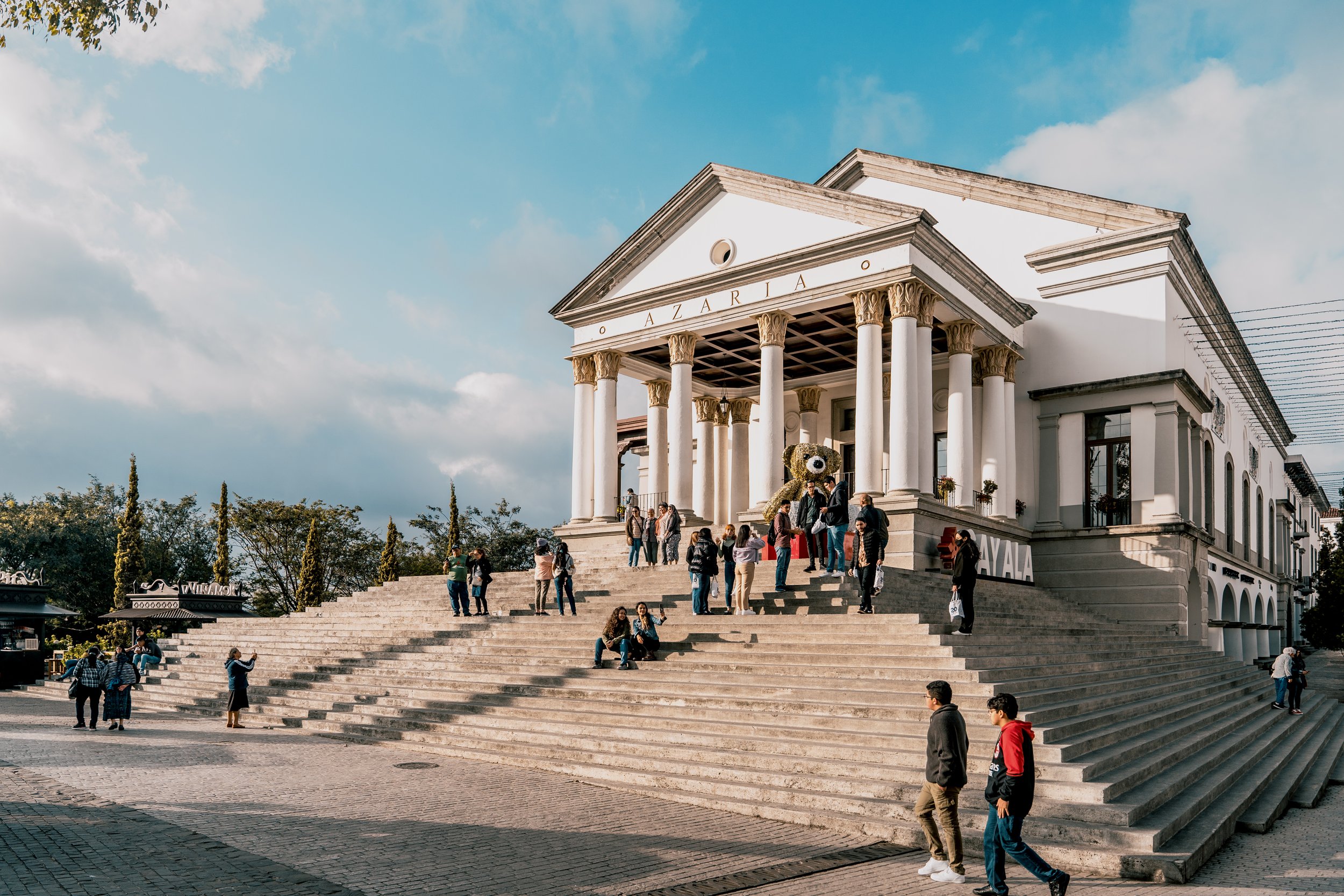Cayalá is an extraordinary new city built within the last decade in Guatemala, challenging conventional urban planning norms.
Conceived by architects María Sánchez and Pedro Godoy, alongside renowned urbanist Léon Krier, Cayalá embraces principles of traditional urbanism, creating a city focused on human-scale design, walkability, and architectural harmony. The city’s master plan is centered on pedestrian streets, small urban blocks, and a mix of residential, commercial, and public spaces, including a church, civic buildings, and charming plazas.
Unlike many modern developments, Cayalá rejects the chaotic aesthetics of glass and concrete in favor of architectural styles that honor Guatemala’s cultural heritage. The city incorporates influences from Spanish colonial, classical, and even Mayan traditions, such as the Azaria Pavilion’s capitals inspired by the ancient Mayan creation story. The result is a place where the architecture feels deeply rooted in its surroundings, offering residents and visitors alike a coherent and harmonious urban experience.
A unique feature of Cayalá is its approach to cars, which are treated as guests. The streets are designed to naturally slow traffic, prioritizing pedestrians without the need for typical urban infrastructure like curbs or speed bumps. This fosters a walkable environment where people take precedence over vehicles, encouraging a lively, community-oriented atmosphere.
Despite its premium real estate and criticisms of exclusivity, Cayalá has become a popular gathering place for people from all walks of life. Its open public spaces and attractive urban environment draw visitors who come to stroll, enjoy the ambiance, or simply watch the sunset behind the volcanoes. The city’s success has led to what is called the “Cayalá effect,” boosting property values and inspiring similar developments in the area. Cayalá serves as a shining example of how beauty, harmony, and community-focused design can transform urban spaces into places people love to be.













